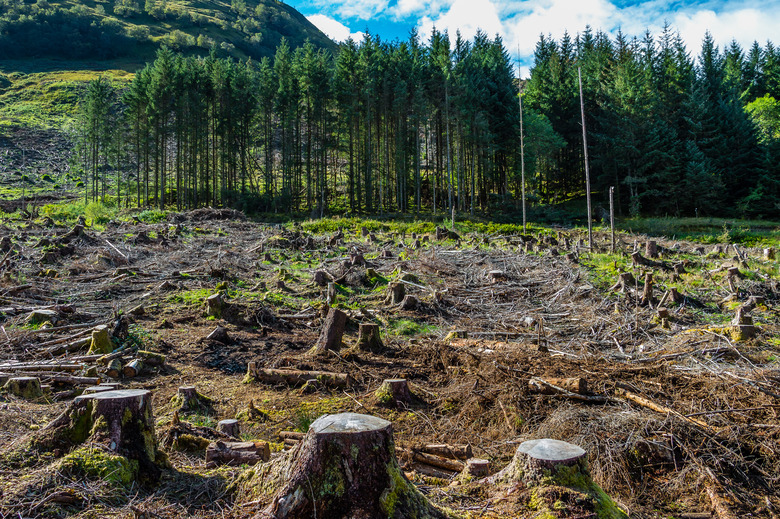Deforestation is a major environmental issue causing climate change, biodiversity loss, and soil erosion. Discover its causes, effects, and solutions for a sustainable future.
Introduction
Deforestation is one of the most pressing environmental issues of our time. It refers to the large-scale clearing or removal of forests, often to make way for agricultural activities, urban development, or industrial projects. While forests are vital for maintaining ecological balance, human activities continue to threaten their survival, putting both nature and humanity at risk.
Causes of Deforestation
- Agricultural Expansion
One of the leading causes of deforestation is the clearing of land for farming and livestock. As the global demand for food grows, forests are being destroyed to create farmland for crops like soy, palm oil, and maize.
While agriculture is essential for feeding billions of people, its expansion often comes at the expense of forests. The irony is that by destroying forests to grow food, we are also undermining the very environmental systems like rainfall, fertile soils, and stable climates that agriculture depends on.
- Logging and Timber Trade
Logging and the timber trade are among the primary drivers of deforestation worldwide. Trees are harvested for a wide variety of products, including furniture, paper, building materials, and fuelwood. While the timber industry plays a significant role in global economies, the problem arises when logging is done unsustainably, without considering the long-term health of forests.
- Urbanization and Infrastructure Development
Urbanization is one of the fastest-growing drivers of deforestation in the modern world. As populations rise and cities expand, the demand for land increases. Forests are often the first casualties of this growth, as they are cleared to make room for housing, industries, and infrastructure projects.
- Mining and Industrial Activities
Mining and industrialization are major drivers of deforestation worldwide. The extraction of natural resources such as coal, oil, gold, diamonds, and other minerals often requires clearing vast stretches of forest land. In many cases, open-pit mining completely removes the topsoil and vegetation, leaving the land barren and unsuitable for regrowth.
The environmental damage caused by mining goes beyond cutting down trees:
- Fires (Natural and Human-Induced)
Forest fires are one of the most destructive causes of deforestation. They can occur naturally through lightning strikes or prolonged dry seasons, but in many cases, they are the result of human activity. While natural wildfires play a role in some ecosystems by regenerating soil nutrients and clearing old vegetation, uncontrolled fires especially those linked to human actions often cause irreversible damage.
- Alternative Energy Sources
One of the major drivers of deforestation in many developing countries is the heavy reliance on firewood and charcoal as primary sources of cooking fuel. For millions of households, especially in rural areas, cutting down trees for fuel is often the cheapest and most accessible option. However, this unsustainable practice contributes to massive forest loss, air pollution, and even health risks due to smoke inhalation.
To combat this, promoting and adopting alternative energy sources is crucial. Some of the most effective options include:
Solutions to Deforestation
1.Reforestation and Afforestation
Forests are the lungs of the Earth, and their destruction through deforestation has created an urgent need for recovery strategies. Two of the most effective solutions are reforestation and afforestation, both of which play a crucial role in restoring the environment and combating climate change.
2.Sustainable Logging
Sustainable logging is a forest management practice that balances the need for wood products with the long-term health of forests. Instead of clearing entire areas, this approach involves harvesting trees carefully in a way that allows the forest to naturally regenerate and continue providing resources, habitats, and ecological benefits.
3.Controlled Harvesting Rates
Controlled harvesting refers to the careful and planned cutting of trees in a way that aligns with the natural ability of the forest to regenerate. Instead of indiscriminate logging, trees are removed in smaller, calculated amounts that ensure the ecosystem remains balanced and productive.
- Government Policies And Enforcement in Combating Deforestation
Government intervention plays a critical role in protecting forests because policies set the legal framework for how natural resources are used and managed. Without strong enforcement, even the best environmental laws remain ineffective
Strong government policies and strict enforcement are the backbone of forest protection. When combined with community participation, modern technology, and international cooperation, these measures can drastically reduce deforestation and promote sustainable development.
Conclusion
Strong government policies and strict enforcement are the backbone of forest protection. When combined with community participation, modern technology, and international cooperation, these measures can drastically reduce deforestation and promote sustainable development.


